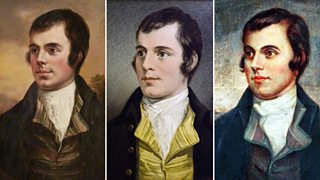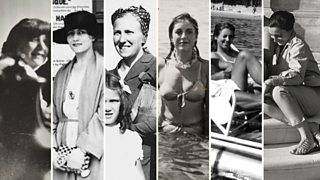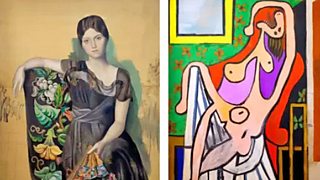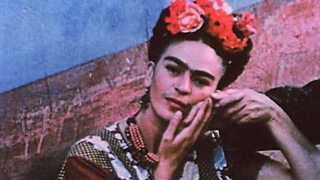Tartan truth: How Scotland was rebranded a Highland paradise
24 June 2019
Highland dress and rugged landscapes have become images synonymous with Scotland. WILLIAM COOK visits the exhibition, which explores their origins and reveals how writers and monarchs created a sentimentalised version of reality.
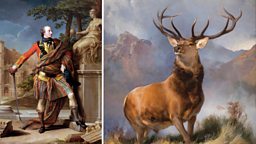
At the National Museums Collection Centre, on the green edge of Edinburgh, curator Patrick Watt is showing me an extraordinary range of artefacts: some crockery Samuel Johnson used on his grand tour of the Hebrides; a flute which Robert Burns acquired on one of his journeys to the Highlands, and a portrait of Colonel David Stewart, who transformed King George IV's visit to Edinburgh into a lavish carnival of Highland regalia.
Wild & Majestic challenges some of our most cherished assumptions about Scottish heritage and culture
What do these curios have in common? They're relics of Scotland's romantic past, a story whose factual origins have become buried beneath a mountain of fictitious whimsy.
They all feature in a new exhibition called , a show which challenges some of our most cherished assumptions about Scottish heritage and culture.
"There's been a longstanding idea here in Scotland that we know our history, that we know the symbols of Scottishness," says Watt. "Bagpipes, warrior culture, beautiful dramatic landscapes, Highland dress… We wanted to understand where this romantic view sits in relation to the reality of Scotland. Is this romantic view of Scotland real?"
Wild & Majestic focuses on the period between the Battle of Culloden in 1746 and the death of Queen Victoria in 1901, an era in which Scotland experienced enormous social change. Cities like Glasgow became centres of vast wealth and awful poverty – yet Scotland's public image became increasingly bucolic and nostalgic. How did this mismatch come about?
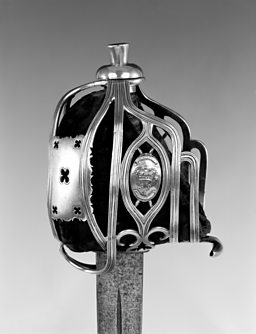

Scotland's reinvention as a pastoral idyll was an astute rebranding exercise, a PR campaign to present Scotland as a loyal and integral member of the Union. Bonnie Prince Charlie's Jacobite revolt against King George II had started in the Scottish Highlands and after the Jacobites were defeated at Culloden Highland culture was brutally suppressed.
The images of Scotland that you see today are essentially images of Highland Scotland. They’re not images of Glasgow or Edinburgh, or the BordersPatrick Watt, curator
However by the start of the 1800s the Jacobite threat had receded, and so the British establishment began to view Highland culture in a more sentimental light.
Walter Scott's novels repackaged the Highlands as a medieval nirvana, and when George IV visited Edinburgh in 1822 (the first British monarch to visit Scotland since the Act of Union) Scott was appointed to stage manage the event, alongside Scottish soldier and historian David Stewart. The festivities they devised owed less to fact than fiction. It was an inspired piece of public theatre, and a pioneering example of political spin.
Scott and Stewart staged a series of spectacular cavalcades, and urged everyone who came along to wear tartan. This made for a stunning spectacle, but it wasn’t remotely authentic. Edinburgh was an international city, a centre of the Enlightenment. Its leading lights were doctors, lawyers, bankers and academics, not Highland lairds and chieftains.
Most of the worthies at these balls and banquets were Lowlanders, for whom tartan was anathema. Yet most people were happy to play along and so the image stuck.
"It's at this point that Highland culture becomes synonymous with Scottish culture," says Watt. "The images of Scotland that you see today are essentially images of Highland Scotland. They’re not images of Glasgow or Edinburgh, or the Borders."
Ironically, it was Lowland writers like Scott, Burns and Byron who promoted and preserved this Highland imagery. "There was very little that was distinctive about Lowland culture when compared to the culture of other parts of the British Isles."
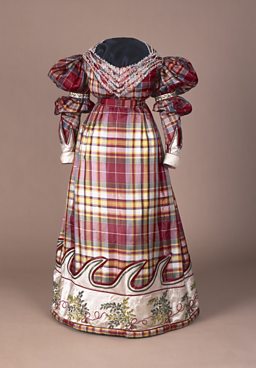
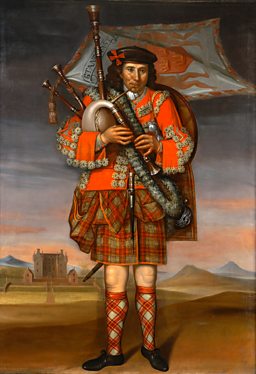
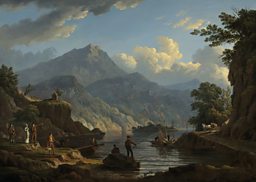
George IV began this reinvention, but it was Queen Victoria who secured it. She came to Scotland as a sightseer, to visit the Highland sites in Scott's novels. The Highlands became her holiday home, a refuge from the affairs of state. She rented a castle in Balmoral and liked it so much she bought it. Her German husband Prince Albert rebuilt it in gothic style, adding a layer of Teutonic fantasy to this Caledonian pastiche. A century after Culloden, the tartanisation of Scots culture was complete.
A century after Culloden, the tartanisation of Scots culture was complete
"If you look at the Highland dress that we would wear to a wedding now in Scotland, it’s essentially exactly the same as the uniform of the Balmoral Highlanders that Queen Victoria was getting her staff to wear in the 1870s," says Watt.
Victoria's patronage made Scotland attractive to the English upper classes, who followed her to the Highlands to paint, hunt, shoot and fish. Yet this depopulated landscape was actually an artificial construct, forcibly cleared of its inhabitants (many of whom were forced to emigrate) to make way for more lucrative deer and grouse.
Scotland was becoming increasingly industrialised and urbanised. Only wealthy foreign visitors could afford to regard it as a rugged wilderness. This image was cemented in iconic pictures like Landseer's Monarch of the Glen. It's an image that persists in modern movies like Braveheart. Then as now, myth and reality were worlds apart.
In the independence debate, this imaginary Scotland has become increasingly politicised, an image employed and exploited by Unionists and Nationalists alike. For some, it's a symbol of Scotland’s status as a distinct and separate nation. For others it's a sign that English hegemony has reduced Scottish culture to a trite and simplistic stereotype.

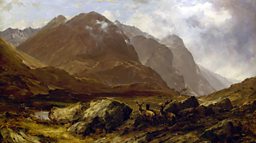
Love it or hate it, in the tourist trade Scotland has become synonymous with the Highlands. This romantic image has become a powerful and lucrative advertising brand. Like all cultural clichés the origins of this aesthetic are authentic, but they’ve been elaborated and distorted, seized on by souvenir shops and reduced to gift shop tat.
The romantic visions of Scotland, for me, are still real – they happened. It’s not based on nothingPatrick Watt, curator
However there's also a positive side to this appropriation and simplification of Highland heritage. It's not just the story of an ancient culture, emasculated by commercialism. It's also the story of the triumph of the underdog. In 1746 Highland dress was banned, the uniform of a failed rebellion. Three centuries years later it's ubiquitous, embraced by punk rockers and the Royal Family alike. It's both a symbol of rebellion, and a symbol of the status quo, and that's what makes it so enduring.
"One of the things that this exhibition shows is that really complex relationship between romance and reality," says Watt, a native Highlander. "The romantic visions of Scotland, for me, are still real – they happened. It’s not based on nothing."
is part of and is at the National Museum of Scotland, Edinburgh, from 26 June to 10 November 2019.
More on images of Scotland
-
![]()
A whistlestop tour of some of the key players in the long and vibrant story of Scottish art.
-
![]()
The Man Who Made Scotland
James Naughtie discusses Walter Scott's role in creating a national story.
-
![]()
An honest, sonsie face
The artworks that continue to be inspired by rare portraits of Robert Burns.
-
![]()
���˿��� at the Edinburgh Festivals
Find out more about what's happening in Edinburgh this summer.
More from ���˿��� Arts
-
![]()
Picasso’s ex-factor
Who are the six women who shaped his life and work?
-
![]()
Quiz: Picasso or pixel?
Can you separate the AI fakes from genuine paintings by Pablo Picasso?
-
![]()
Frida: Fiery, fierce and passionate
The extraordinary life of Mexican artist Frida Kahlo, in her own words
-
![]()
Proms 2023: The best bits
From Yuja Wang to Northern Soul, handpicked stand-out moments from this year's Proms


